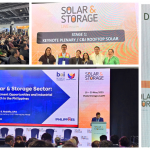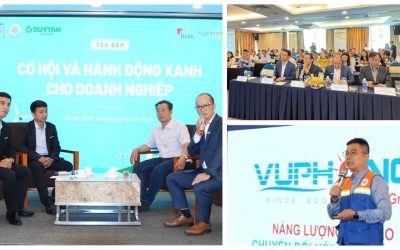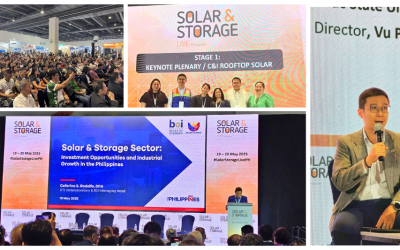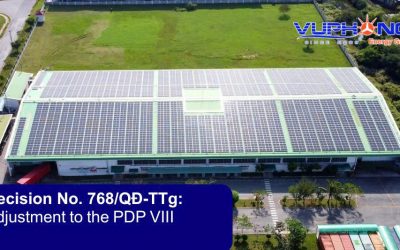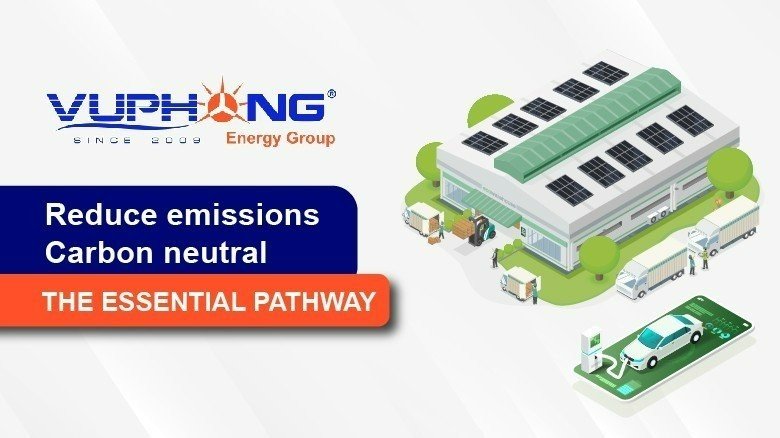
Many green manufacturing and consumption businesses have long prioritized reducing greenhouse gas emissions and carbon footprint. However, with recent strong commitments and actions from Governments, reducing emissions and achieving carbon neutrality is not just a trend but a essential pathway for businesses to avoid being phased out of the market.
The global trend
With over 100 countries making strong commitments to reduce greenhouse gas emissions and aiming for net-zero emissions by the mid-century, the 26th Conference of the Parties to the United Nations Framework Convention on Climate Change (COP26) is considered a significant milestone and a major step in the journey to reduce emissions and address global climate change. Leading emitting countries such as China, the United States, India, Indonesia, Brazil, Russia, and the European Union have all committed to reducing emissions and achieving carbon neutrality. Currently, within the G20 group responsible for 75% of global greenhouse gas emissions, 19 members have committed to achieving net-zero emissions, an increase from 17 members at COP26.
Alongside the strong commitments from governments, the Glasgow Financial Alliance for Net Zero (GFANZ) has also been established with over 550 member companies from various financial sectors, including banks, insurance companies, asset owners, financial service providers, and investment advisors, spanning across 50 countries.
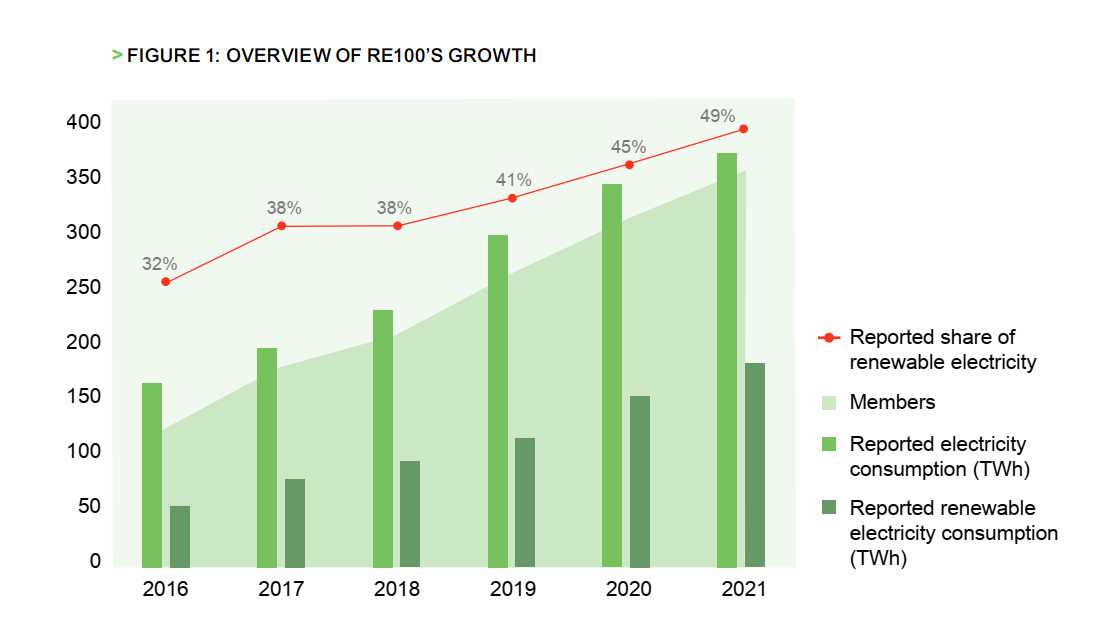 Overview of RE100’s growth in the period 2016-2021 (Source: RE100 2022 Annual Disclosure Report)
Overview of RE100’s growth in the period 2016-2021 (Source: RE100 2022 Annual Disclosure Report)
Notably, the European Union (EU), one of Vietnam’s key trade partners, recently implemented the Carbon Border Adjustment Mechanism (CBAM) legislation to reduce greenhouse gas emissions and achieve carbon neutrality by 2050. In the first phase (from October 1, 2023 to January 1, 2026), importers of goods such as cement, iron and steel, aluminum, fertilizers, electricity, and hydrogen gas from outside the EU will be required to declare greenhouse gas emissions but will not be taxed. Importers will be obliged to report the carbon footprint of their products in the second phase (beginning January 1, 2026), receive CBAM certifications, and pay taxes to the government of the EU nation where the goods are imported.
Following the EU’s establishment of the CBAM mechanism, the United Kingdom began consultations on a similar mechanism. Previously, the United States adopted the Clean Competition Act in July 2022, which imposes carbon border adjustments on energy-intensive imports while promoting domestic carbon reduction in the industry.
As a result, reducing greenhouse gas emissions and achieving carbon neutrality has become a global goal, creating a new challenge for businesses in the current globalization trend. This difficulty applies not just to companies in the global supply chain, but also to those looking to join the export market. If emission-reduction measures are not implemented quickly, businesses may face significant carbon taxes when exporting soon, increasing costs and reducing competitiveness. As green standards rise, export opportunities may gradually diminish in many international markets if businesses fail to meet or acquire an advantage over their competitive competitors from other nations.
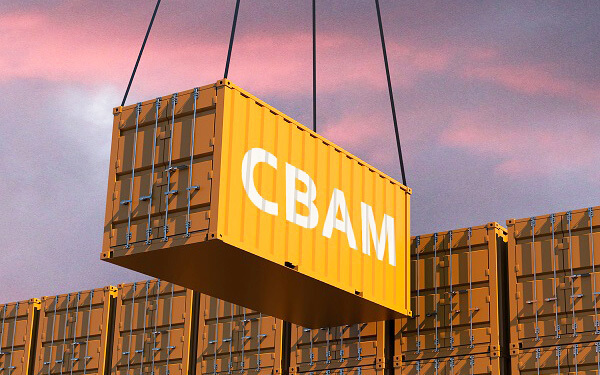 The trend of emission reduction and green mechanisms such as CBAM present new challenges for businesses participating in the global supply chain (Image: Internet)
The trend of emission reduction and green mechanisms such as CBAM present new challenges for businesses participating in the global supply chain (Image: Internet)
Domestic corporations are not excluded
It should be noted that emission reduction and carbon neutrality are essential pathway for businesses participating in the global supply chain and those servicing the domestic market. Vietnam is committed to reducing greenhouse gas emissions and reaching net-zero emissions by 2050. According to the National Climate Change Strategy for the period up to 2050 (adopted on July 26, 2022), by 2030, establishments generating 2,000 tCO2e or more in annual greenhouse gas emissions must implement emission reductions; facilities generating 200 tCO2e or more annually must use emission reductions by 2050. Furthermore, as Decree No. 06/2022/N-CP mandated, many manufacturing enterprises have been required to give information and data on greenhouse gas emissions for inventory purposes beginning this year. Then, between 2026 and 2030, these enterprises must reduce their greenhouse gas emissions following the Ministry of Natural Resources and Environment objectives.
As a result, businesses must understand and improve their production processes proactively, apply emission reduction solutions, shift toward carbon neutrality, and have a specific roadmap to comply with regulations. This will assist them to improve their competitiveness in the new trend. This is especially relevant in the current global supply chain shift, with Vietnam serving as a destination for many big corporations worldwide. This opens opportunities for more Vietnamese businesses to enter the supply chain and become suppliers to global enterprises operating in Vietnam.
Developing a green economy and transitioning to green manufacturing is essential for individual businesses, the whole supply chain, and, more broadly, the economy. When a supplier unit reduces emissions and achieves carbon neutrality, businesses in the operational chain get closer to achieving net zero emissions. As a result, the more companies that participate in emission reduction efforts, the closer we are to the carbon neutrality goal. The Net Zero objective is reached faster when a network of enterprises cooperates on carbon neutrality efforts.

Towards a Carbon-Neutral Economy
Many localities in Vietnam have established emission reduction and low-carbon economy goals as part of the overall goal of reducing greenhouse gas emissions and striving for net zero by 2050. According to the Climate Change Action Plan for 2021-2030, with a vision towards 2050, Ho Chi Minh City has set a goal of reducing emissions by 10% by 2030 and transitioning to a low-carbon and sustainable economy, aiming for a 30% reduction with international support.
With over 14 years of experience in the renewable energy sector (since 2009), Vu Phong Energy Group is supporting Ho Chi Minh City in developing stronger solutions toward internal carbon neutrality. Vu Phong assists in calculating potential emission reduction when supporting the development of rooftop solar systems in the city based on our experience in developing and operating practical solar energy systems, particularly rooftop solar systems for businesses. We are also advising on the establishment of an internal carbon credit market.
According to the Department of Natural Resources and Environment’s greenhouse gas inventory report in Ho Chi Minh City, stationary energy and transportation emissions account for 93.6% of total emissions and absorption. As a result, these two sectors are crucial to lowering greenhouse gas emissions in the city. Furthermore, reducing emissions from plastic waste management enhances the process’s effectiveness. Ho Chi Minh City has a high energy consumption demand as a densely populated urban area with many active manufacturing and business activities. In terms of electricity consumption alone, the city consumes roughly 25 billion kWh per year, accounting for nearly 10% of the national total. As a result, Ho Chi Minh City’s immediate priority will be to reduce emissions in these two industries.
Due to international integration and competitive pressure, as a developing country, Vietnam must pay attention to global trends such as the circular economy, green economy, or greenhouse gas reduction. However, owing to limited financial resources and a late start, we may prioritize solving particular difficulties beginning with large emission sources, adopting and learning from experiences, improving, and extending further. Reducing greenhouse gas emissions and aiming for carbon neutrality is a global trend. Proactive adaptation is essential for businesses to maintain and enhance their position in this trend, and it will be even more successful when businesses collaborate to achieve sustainable development.
Phong, Pham Nam
Founder, Chairman of the Board of Directors Vu Phong Energy Group
(Source: Forbes Vietnam Magazine No. 119)
* Translated and added images by Vu Phong Energy Group

